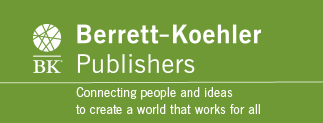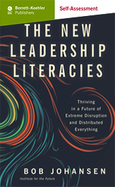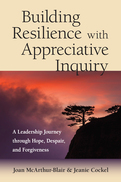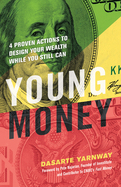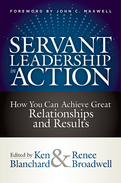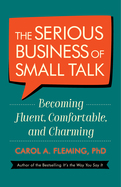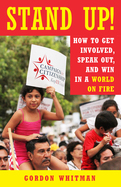PRODUCT INFORMATION
This self-assessment asks you to do a candid evaluation of where you stand with regard to each of the five future literacies introduced in The New Leadership Literacies , as well as the ten future leadership skills introduced in Leaders Make the Future .
Format: Online Subscription
Price: $14.95 for one-year subscription, or five tests, whichever comes first
Description: This instrument consists of 30 questions, 15 pertaining to the now and 15 relating to one year from now. For each section, statements will be rated from 1 to 5 as to how true they are. The assessment will produce two graphics of your results and interpretation from the author. You can take the test up to five times within a 12-month period and compare your results.
From Self-Assessment - Author's Welcome
The challenge I hope you will take away from reading this book is how to apply this foresight to provoke your own insights and actions—to make yourself a better leader.
I am suggesting a process you can use to develop yourself as a leader and improve your readiness for the future.
The Future Readiness Self-Assessment is designed so you can use it on your own, but it is also a great conversation starter for workshops and team-building efforts. For a team in workshop settings, you can use this online self-assessment as advance preparation for an in-person or online workshop—or as a follow-up. I often use it with groups before my talks or workshops.
The Future Readiness Self-Assessment is a chance to reflect on yourself and your leadership—given the external future forces of the next decade.
In a world where everything that can be distributed will be distributed, are you ready to lead shape-shifting organizations?
Are you ready to thrive in a future of extreme disruption?
This is your chance to assess your own leadership literacies and skills—and test them against the future that I describe in The New Leadership Literacies and Leaders Make the Future . You don’t have to agree with my forecast to find this exercise provocative and useful. In fact, the most useful forecasts are often the ones you don’t like, the forecasts that make you feel uncomfortable and queasy.
There are no right answers, but every leadership team should have a mix of these future leadership skills if it is to engage successfully with the external future forces of the next decade. Ideally, all members of the team will share all five of the future leadership literacies.
As you consider the ten-year forecast inside the book jacket (and described in narrative form in the Introduction) of Leaders Make the Future , ask yourself which waves of change you will choose to ride—but at least consider which waves of change you should avoid being hit by. In The New Leadership Literacies , Chapters 2, 4, 6, 8, and 10 explore the future of each of the five new leadership literacies. Re-reading those chapters will refresh your thinking about the future world in which you will be leading.
From Book - The New Leadership Literacies
Over the next decade, today's connected world will be explosively more connected. Anything that can be distributed will be distributed: workforces, organizations, supply webs, and more. The tired practices of centralized organizations will become brittle in a future where authority is radically decentralized. Rigid hierarchies will give way to liquid structures. Most leaders—and most organizations—aren't ready for this future. Are you?
It's too late to catch up, but it's a great time to leapfrog. Noted futurist Bob Johansen goes beyond skills and competencies to propose five new leadership literacies—combinations of disciplines, practices, and worldviews—that will be needed to thrive in a VUCA world of increasing volatility, uncertainty, complexity, and ambiguity. This book shows how to (1) forecast likely futures so you can “look back” and make sure you're prepared now for the changes to come, (2) use low-risk gaming spaces to work through your concerns about the future and hone your leadership skills, (3) lead shape-shifting organizations where you can't just tell people what to do, (4) be a dynamic presence even when you're not there in person, and (5) keep your personal energy high and transmit that energy throughout your organization.
This visionary book provides a vivid description of the ideal talent profile for future leaders. It is written for current, rising star, and aspiring leaders; talent scouts searching for leaders; and executive coaches seeking a fresh view of how leaders will need to prepare. To get ready for this future, we will all need new leadership literacies.
Leaders cannot predict the complex challenges they are called on to face. Veteran consultants Joan McArthur-Blair and Jeanie Cockell show that Appreciative Inquiry (AI) is an invaluable tool to build resilience.
AI is a widely used change approach that emphasizes identifying what's working well in a system. Leaders can use AI to increase their ability to weather the storms they'll inevitably encounter and be resilient. A profound guide, this book features personal accounts from leaders across a variety of settings describing how they've practiced appreciative resilience in the ongoing cycle of hope, despair, and forgiveness.
2018
If you're under 40, you may not have a lot of money, but you're loaded with a valuable resource: time. It probably doesn't seem like it when you're looking at your student loan debt or scraping up rent money each month, but being young is the ultimate advantage when it comes to building wealth. Starting now means you can experiment, learn from mistakes, bounce back from setbacks, and steadily build your legacy.
Rising-star financial advisor Dasarte Yarnway offers a simple 4-step process you can use to become a Master Wealth Builder. It begins with having the right mindset—wealth begins in your mind and then is built every day through intentional actions. Yarnway examines:
• The 4 most common financial pitfalls and how to avoid them
• The 5 habits all Master Wealth Builders engage in
• The 3 best ways to master your income
• 7 simple practices for controlling costs
A worksheet helps you assess exactly where you are financially, where you want to go, and how you're going to get there. So start now! As Warren Buffett said, “Someone is sitting in the shade today because someone planted a tree long ago.” The sooner you plant, the more shade you'll have.
Servant leadership is the secret behind the success of some of the world's leading organizations. Succinctly put, serving leaders lead by serving their people, not by exalting themselves.
Through the stories and reflections of leading businesspeople, bestselling authors, and spiritual leaders, this collection offers tools for implementing this proven but radical leadership model. The book is organized into three sections:
-What is Servant Leadership? describes different aspects of servant leadership
-Models of Servant Leadership focuses on people who have been identified as classic servant leaders
-Putting Servant Leadership to Work features firsthand accounts of how servant leadership has been implemented in various organizations and the difference it has made in both results and human satisfaction.
Carol Fleming wants to show you that small talk is not as “small” as you might think. It's the foundation of every relationship, professional and personal. It is the sound of people reaching out to each other, searching for similarities, shared interests, goodwill, connections, and friendship. And it's something we all do every day with people we know. It's just the one little bit about strangers that throws some people off. Graceful social conversation can be learned, even by those requiring the smallest of baby steps.
Fleming covers the inner and outer aspects—from the right attitude to how to dress, move around, and introduce yourself. Most importantly, she lays out a series of simple, memorable conversational strategies that make it easy to go from “Nice weather we're having” to a genuine, rewarding give-and-take. But she won't tell you what to say. Believe it or not, you already have what you need inside you. She merely provides the keys to unlock it.
Small talk is the language of welcome, the extension of friendliness, the gracious acknowledgment of others, the kindly exchange of introductions and smiles, and the creation of a safe, courteous social space—and this is what has you terrified? After you read this book, you'll wonder what all the fuss was about.
2018
How to Get Involved, Speak Out, and Win in a World on Fire
A society that actively combats racism, treats climate change as a serious threat, and ensures that all people have a living wage and a decent life for themselves and their families is not a progressive pipe dream. Victories are being won every day, all over the country. But they didn't happen just by clicking “donate” on a website. Gordon Whitman says that fundamental change demands forming the kind of face-to-face relationships that have sustained every social movement in history.
For two decades, Whitman has been working with PICO National Network to equip tens of thousands to fight racial discrimination and economic injustice. He brings that experience to this book, describing five kinds of conversations that enable people to create organizations that can successfully overcome the forces of oppression and reaction.
The first conversation to have is with ourselves, to make sure we're clear about our purpose and in it for the long haul. Then we need to share the personal story of how we came to this point with others—there is no more powerful way to connect. They in turn will share their stories, and then we can have the third conversation, about becoming a team. This team reaches out to people they know to talk about their concerns and priorities, building a broad base of supporters.. Then, with our base at our back, we can have that final conversation, directly confronting the powers that be.
Of course, this isn't as simple as it sounds. Appropriately enough, Whitman uses stories, his own and others, to illustrate how best to handle these conversations and to show how they work together to build a movement. We can't just sit on the sidelines sharing angry social media posts or signing online petitions. We need to get directly involved, reach out, knock on doors, and bring our whole selves to the table if the changes our country so desperately need are ever going to come.
